Performance of the Modified Strips
As a benchmark, we choose the 5 m long strip with 60 LEDs per meter, which is commonly available.
The Problem With Common LED Strips
When you turn on all LEDs on the maximum brightens (RGB: 255, 255, 255) and power it from a decent power supply you can observe the following:
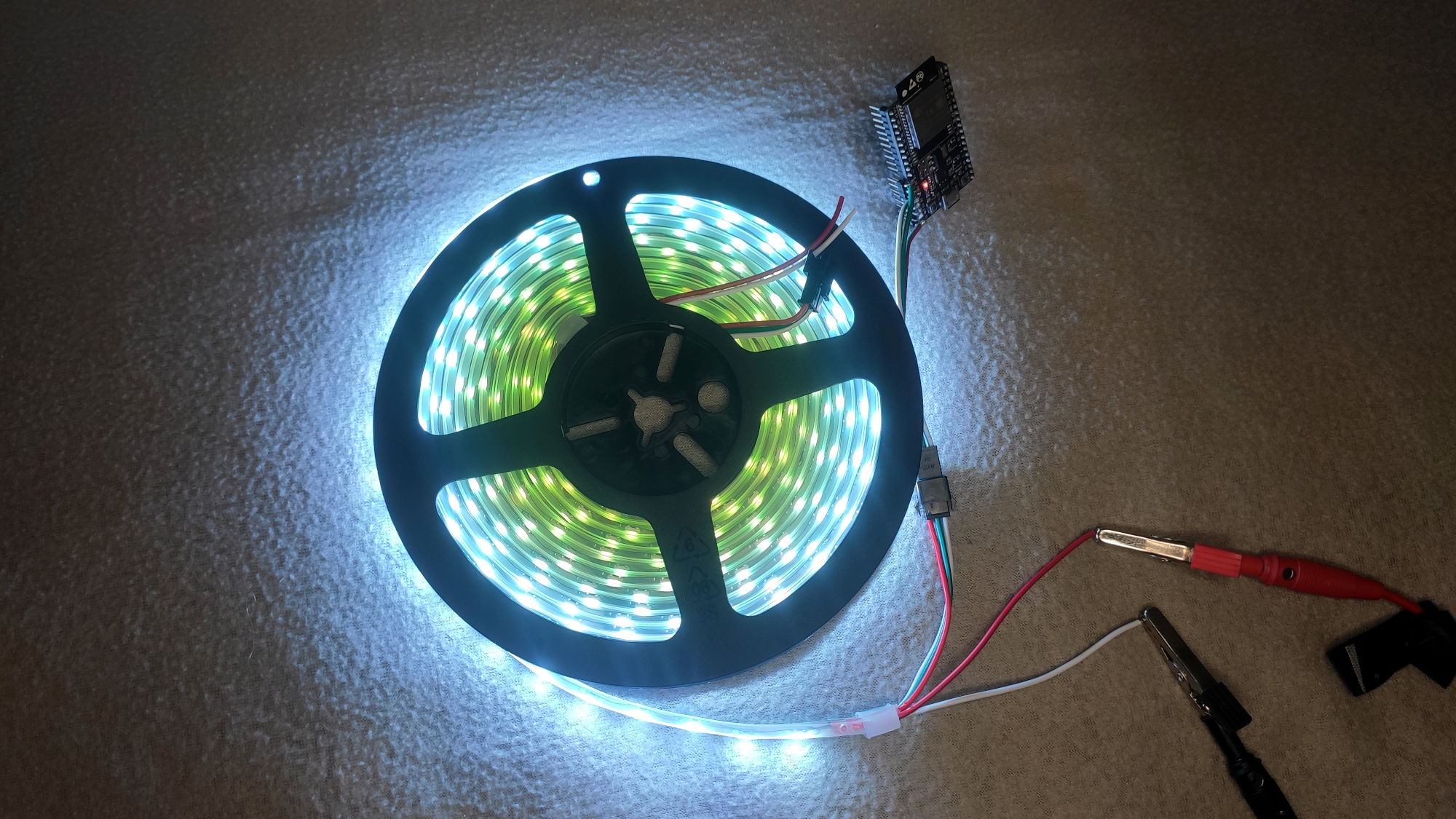
The end of the strip is not white, but orange/red. We power the strip from 5 V:
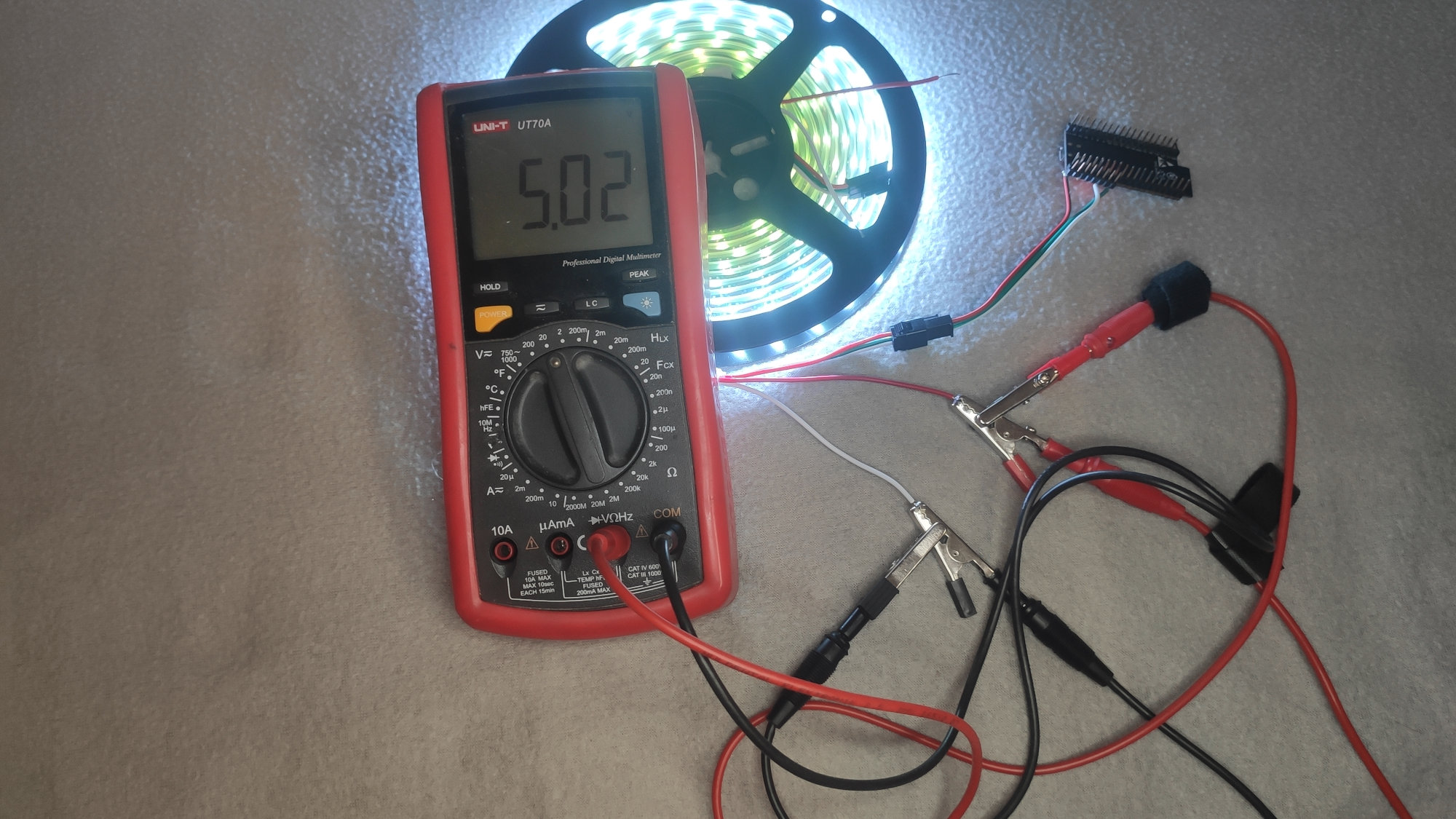
We also measure, that the strip draws only about 3.7 A instead. The low current is suspicious: according to datasheet, each LED should draw between 60-70 mA on full brightness. That should be 18-21 A for our strip (300 LEDs)! Let’s measure the voltage at the end of the strip: it is only 2.5 V:
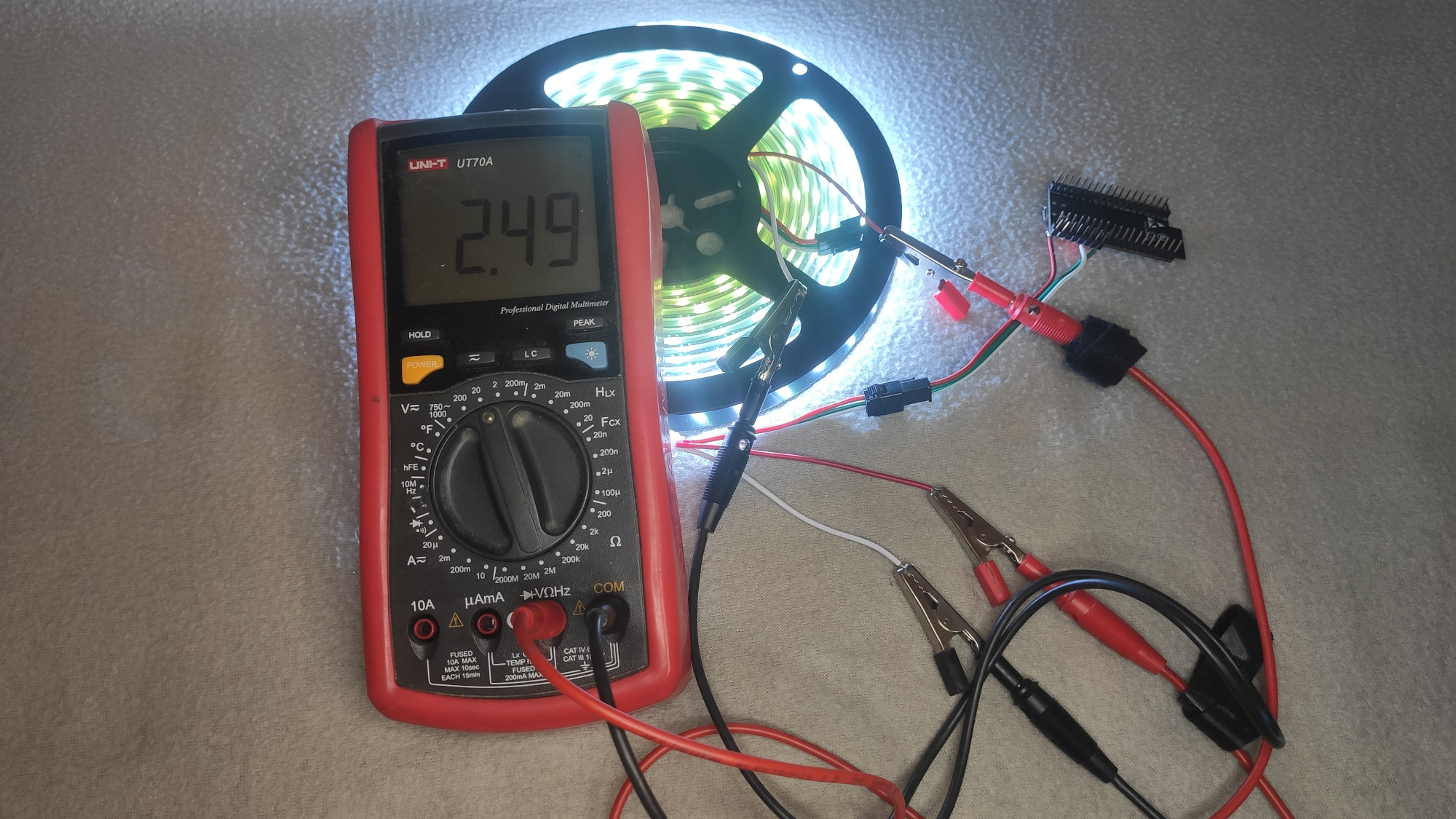
The voltage drop we observe is caused by the current flowing through the copper traces on the flexible PCB (see Ohm’s law if you are unfamiliar with this effect). The copper wire on the strips is relatively thin and narrow, therefore, there is a significant voltage drop. Actually, we can try to measure the resistance (note that this is not the ideal setup for measuring low resistance, but it is OK for illustration purposes):

It is 1 Ohm (for the GND wire, there will one more Ohm for the +5V wire). That’s a lot for a power trace. Just make sure we measure the resistance of the traces, not our multimeter test leads:
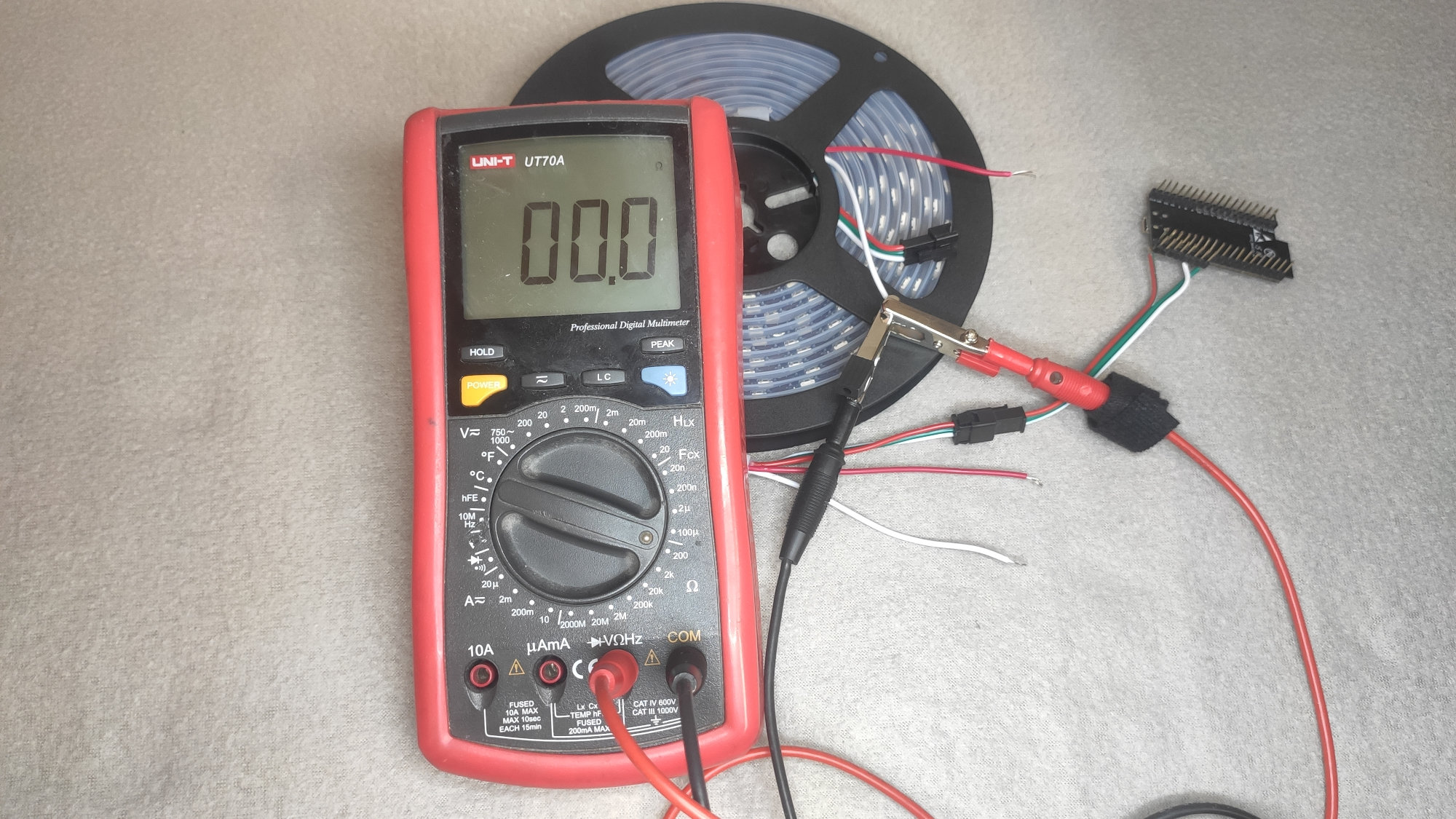
Therefore, we can see that the voltage drops along the strip, thus, the LEDs in the end of the strip do not have enough voltage to shine fully. But why they turn red? There are red, green and blue LED in the chip. Each of the LED color have different forward voltage drop - the blue one has the larges one and it is usually around 3 V. That means if you LED is supplied with less than 3V, it cannot light up the blue channel and thus, it is missing from the final color.
You could solve that with just bonding a thick wire the back of the strip. However, a suitable wire for 21 A will be pretty thick (around 3.5 mm²). Therefore, it is better to power the whole strip with with higher voltage, thus lower the current flowing in the wires and only lower the voltage locally for a few LEDs. And that’s what exactly Neopixel Booster does.
If your are interested in the assembly procedure for Neopixel Boosters, visit assembly guide.
Performance of the Modified Strip
We took the strip, cut it in 50cm strips and joined them with Neopixel Boosters. The Neopixel boosters are connected via a power supply wire with 0.5 mm². We powered the whole setup from 12 V. It shines nicely white and the color is uniform:
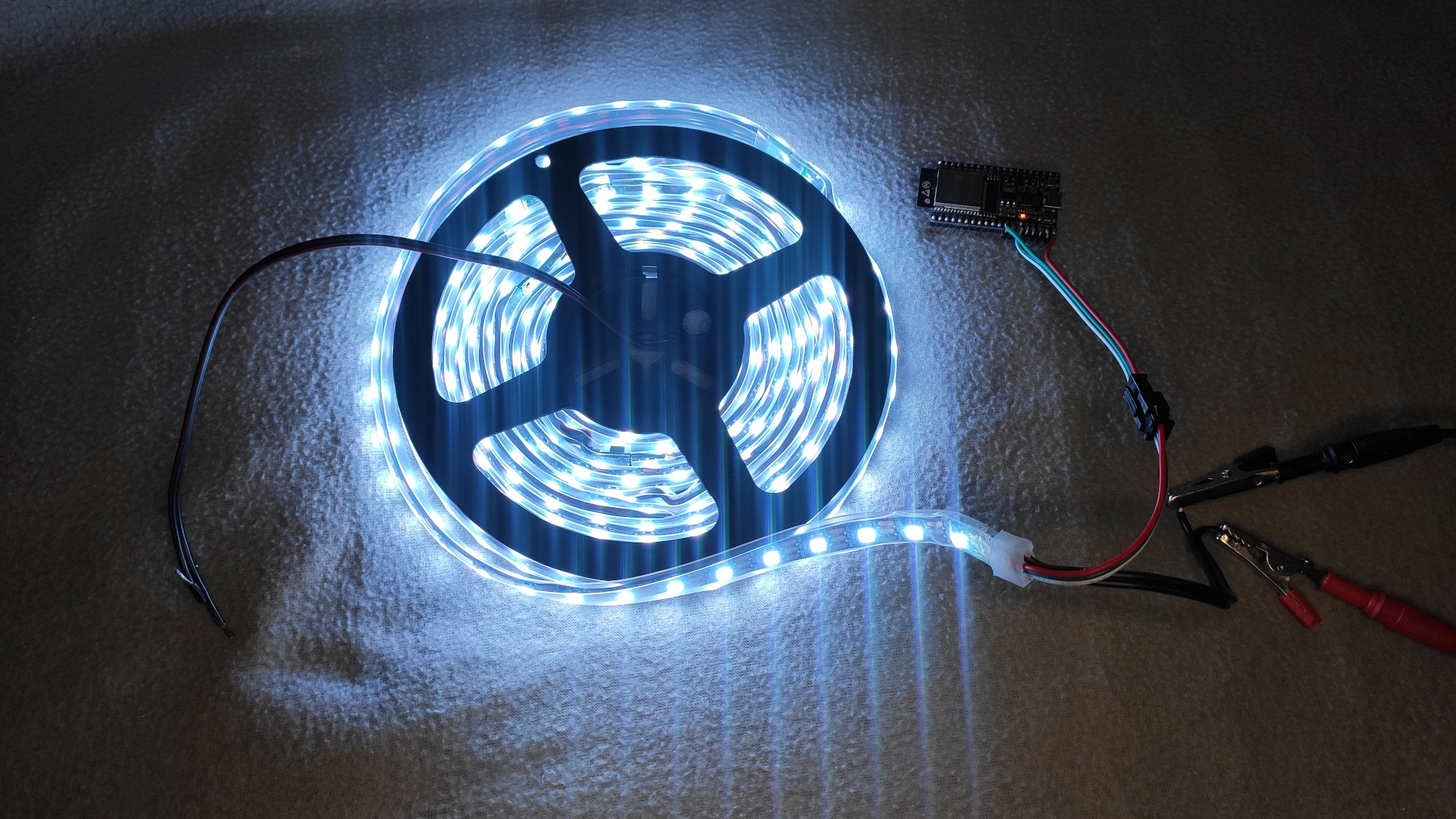
The voltage drop across the power line is roughly 0.7 V:

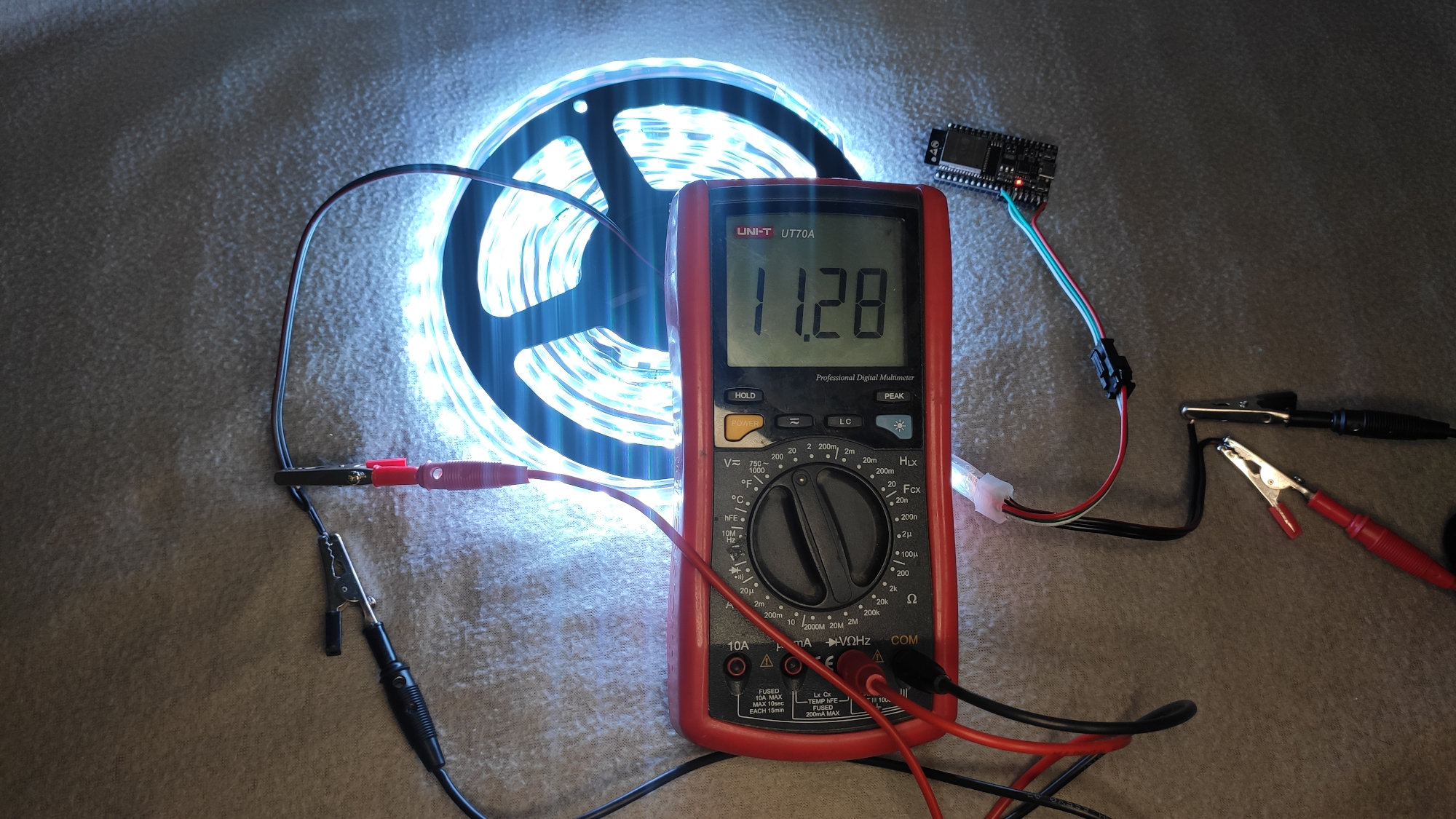
And the strip consumes 5.45 A:
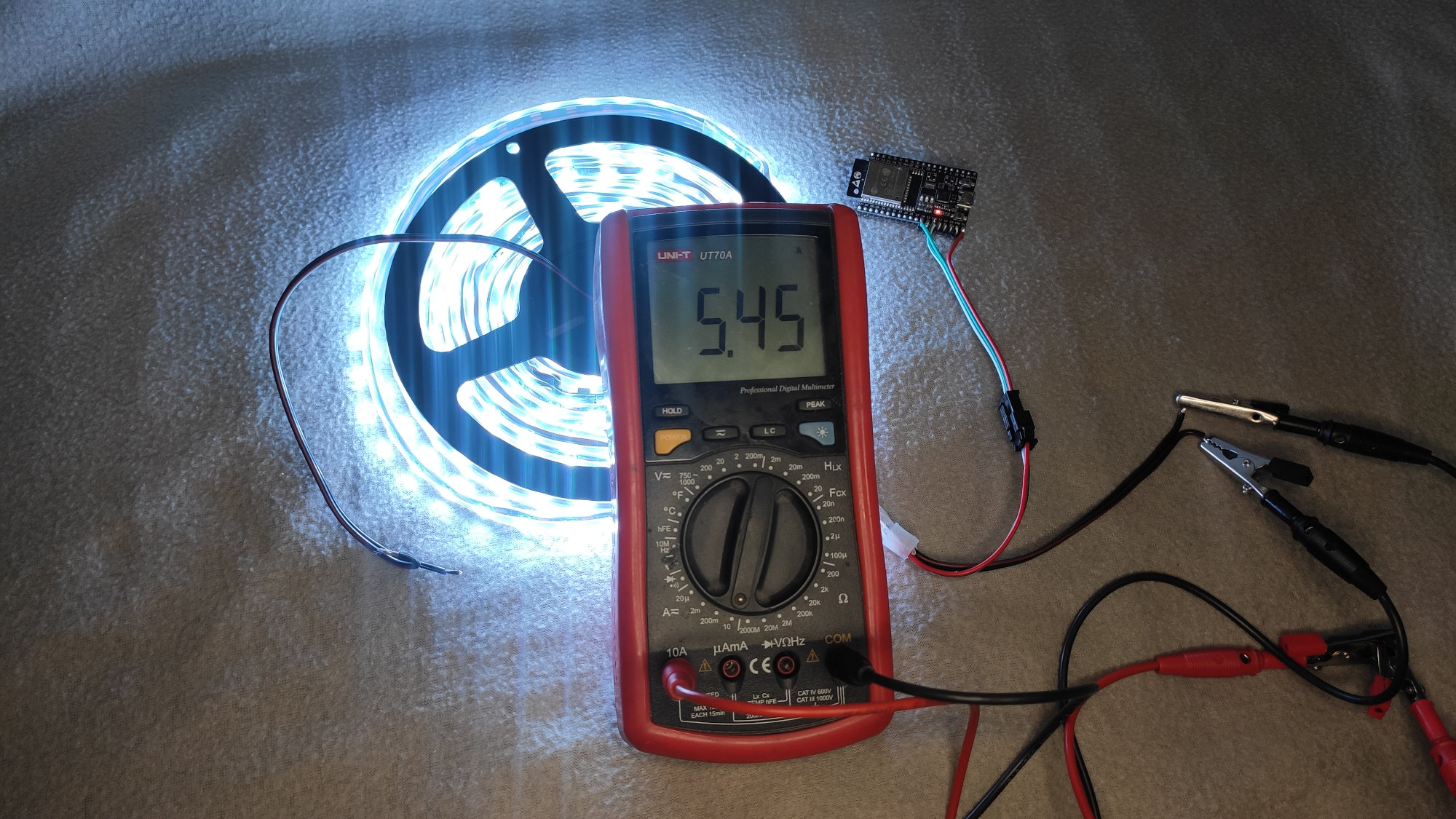
Therefore, the modified version draws 66 W, meanwhile, the original version draws only 17.5 W (you can tell the difference in brightness clearly). If your are interested in knowing efficiency of such solution, see performance characteristics.